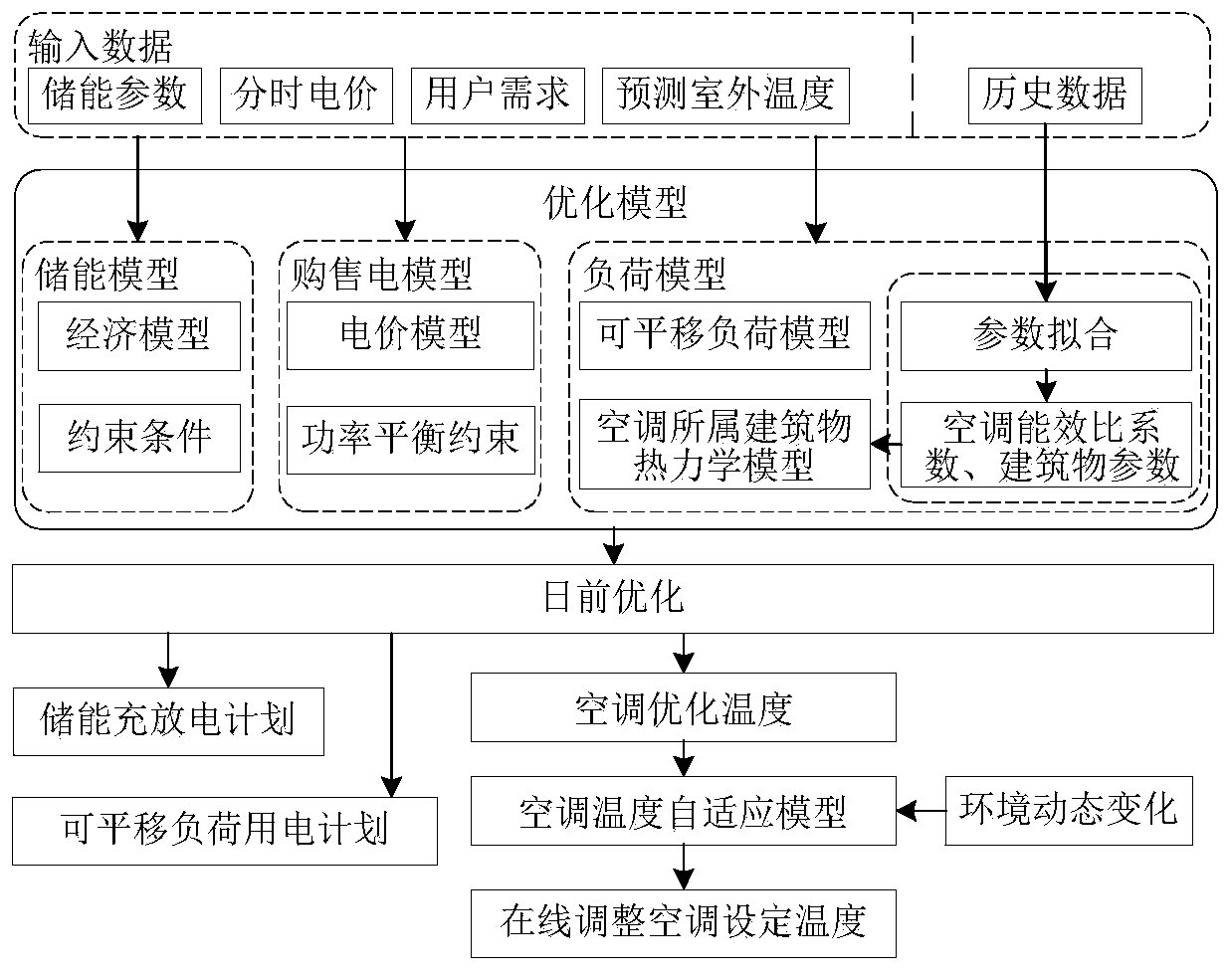A method for energy optimization of household microgrid based on q-learning
A technology of energy optimization and micro-grid, which is applied in the direction of electrical components, circuit devices, data processing applications, etc., can solve the problems of not being widely used, not suitable for single residential users, etc., and achieve the effect of improving accuracy
- Summary
- Abstract
- Description
- Claims
- Application Information
AI Technical Summary
Problems solved by technology
Method used
Image
Examples
Embodiment Construction
[0063] The present invention will be further explained below in conjunction with the drawings.
[0064] (1) Establish a model of each unit in the household microgrid
[0065] A typical household microgrid is composed of photovoltaic cells, energy storage systems, and various household loads. The voltage level is single-phase AC 220V, and its structure diagram is as follows figure 1 Shown.
[0066] 1) Photovoltaic power generation system
[0067] Users equipped with small photovoltaic cells can make full use of solar energy resources, change the passive power mode of users purchasing electricity from the grid in one direction, and feed the excess electric energy back to the grid. With the development of new energy sources, various small photovoltaic cells have begun to be used in residents, such as dye-sensitized cells composed of transparent conductive glass, dyes and electrolytes, which are used as window glass, which can transmit light and can be used as batteries. use.
[0068] 2)...
PUM
 Login to View More
Login to View More Abstract
Description
Claims
Application Information
 Login to View More
Login to View More - R&D
- Intellectual Property
- Life Sciences
- Materials
- Tech Scout
- Unparalleled Data Quality
- Higher Quality Content
- 60% Fewer Hallucinations
Browse by: Latest US Patents, China's latest patents, Technical Efficacy Thesaurus, Application Domain, Technology Topic, Popular Technical Reports.
© 2025 PatSnap. All rights reserved.Legal|Privacy policy|Modern Slavery Act Transparency Statement|Sitemap|About US| Contact US: help@patsnap.com



